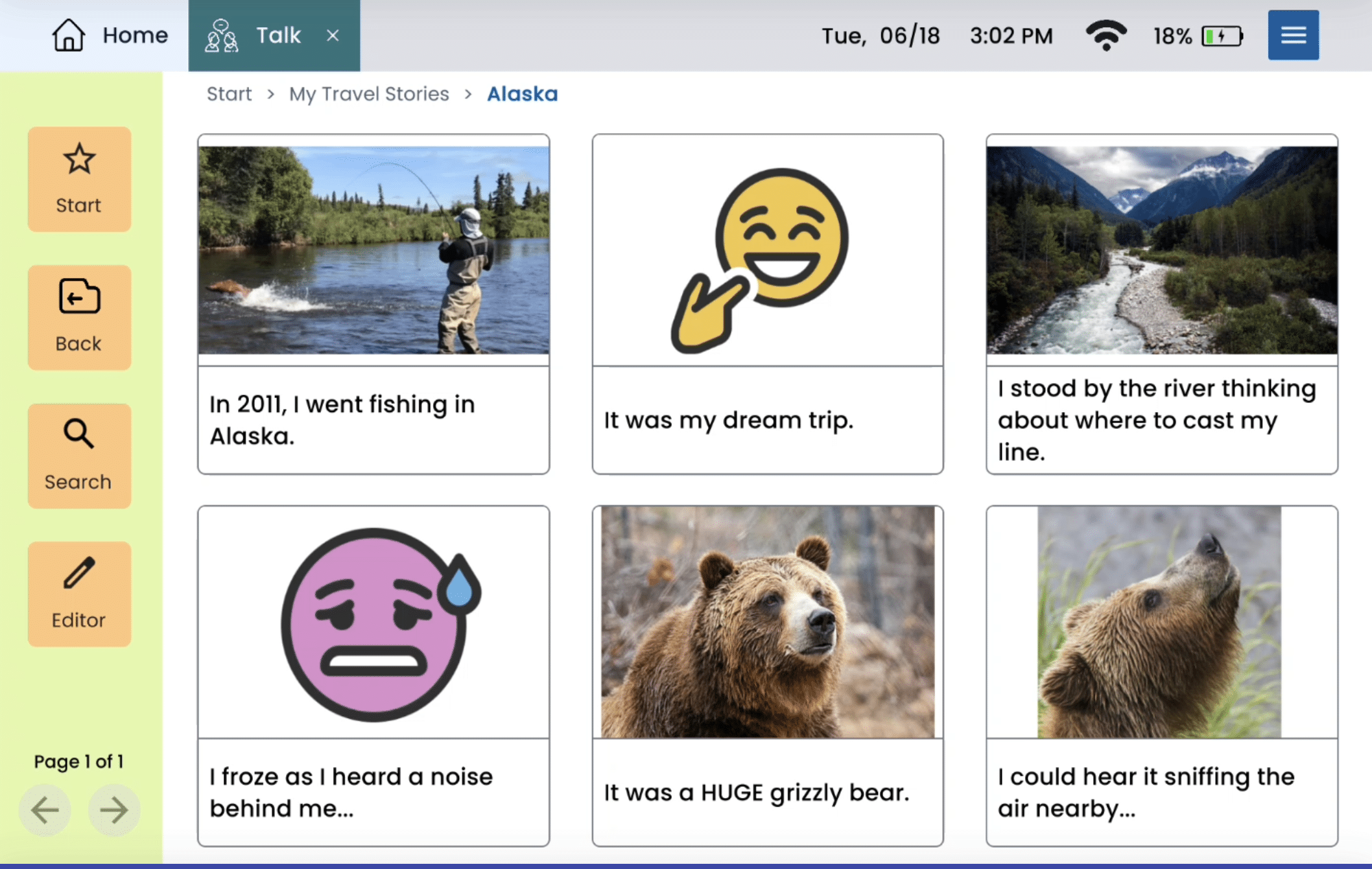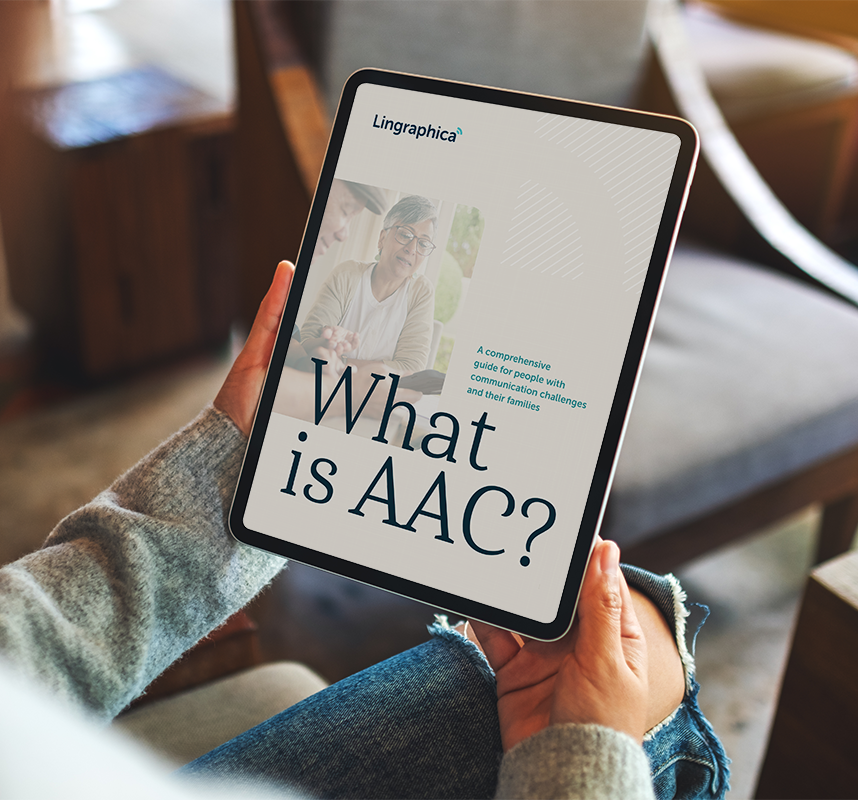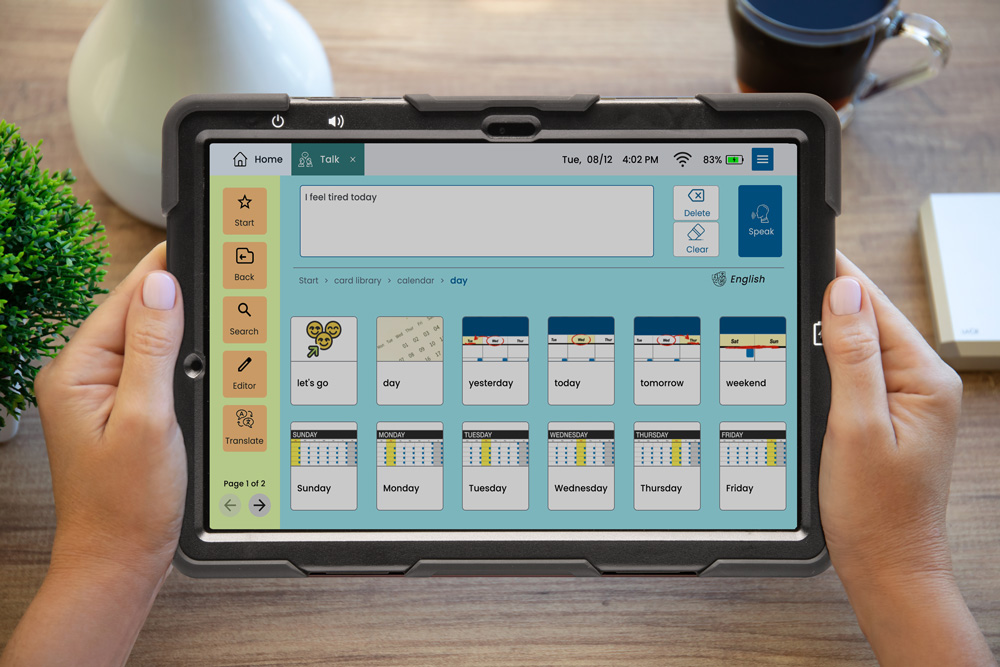4 Benefits of Incorporating Whiteboards in Therapy
Published on Oct 15, 2019

Most of us are familiar with whiteboards and their use in classrooms and business environments. But do you know how effective they can be when working with people who have speech or communication disorders?
Traditionally, whiteboards are glossy, white surfaces for nonpermanent markings, typically used in educational settings, like classrooms and offices. However, with the rise of technology, ”whiteboard” apps are now commonly found on computers and tablets of all kinds.
For many SLPs, whiteboards have become an invaluable tool when working with people with speech or communication disorders. If you aren’t currently working with a whiteboard on an AAC device, consider the following four benefits:
1. Multi-Modal Stimulus
Using keywords on whiteboards is helpful to those with aphasia, as your clients are able to see the word, read the text, and/or see a drawing of the word—all of which aid in their ability to understand and ultimately communicate.
2. Communication through Drawing
A person with aphasia can benefit from using a whiteboard, because it allows him or her to write or draw a key word, sentence, or the initial letter of a word when it’s difficult to produce the desired message verbally.
3. Expression through Color
The ability to use multiple colors to express a word, thought, or idea can be extremely helpful to someone with communication disorders, especially if those ideas can be captured on a high-tech AAC device (labeled with words and a recording of those words). For example, if someone is trying to draw a picture of grass, it is extremely helpful to use a green marker and possibly a blue marker to represent the sky, making the icon much easier to identify.
4. Convenient Communication Aides
The uses for the whiteboard are highly practical and efficient. For example, in any given day, your clients may need to communicate with their caregiver, doctor, nurse, receptionist, and therapist. Having the whiteboard tool on an AAC device enables them to draw, write, and/or create icons to convey their desired grocery list items, medical symptoms/issues, and therapy assignments so that in-person interactions go smoothly and efficiently. Whiteboards save time and cut down on frustrations for people with speech disorders, making communication much easier and more pleasurable.
About Contributor
Lingraphica helps people with speech and language impairments improve their communication, speech, and quality of life. Try a Lingraphica AAC device for free.













